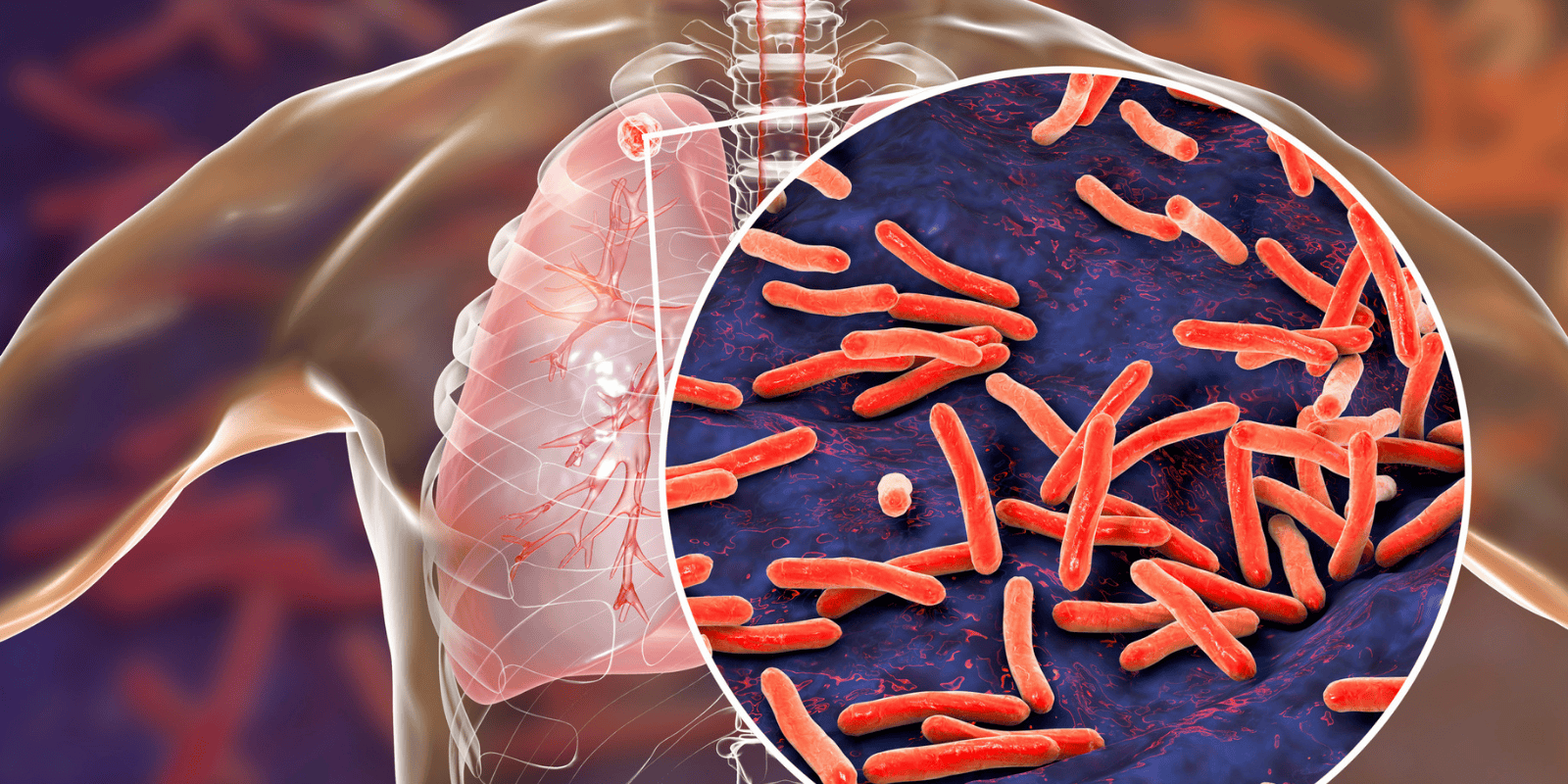
Since January 2024, there has been an ongoing tuberculosis (TB) outbreak in Kansas. While the outbreak is larger than normal, the risk remains low for the public. As of January 31, 2025, there were 67 confirmed cases of active TB disease. The Kansas Department of Health and Environment (KDHE) shared that most of these patients were no longer considered infectious or were isolating to prevent infection to others. In addition to active disease cases, there were 79 confirmed cases of latent TB. KDHE is working to ensure individuals are receiving appropriate treatment and testing.
As the outbreak is ongoing, it is difficult to compare its size to previous TB outbreaks in the US. The largest US outbreak in recent years occurred from 2015 to 2017 as M. tuberculosis spread through Georgia homeless shelters leading to 170 active TB cases and over 400 latent cases.
TB is a serious illness caused by the bacterium M. tuberculosis. TB mainly affects the lungs and can be spread through coughing, sneezing, singing, or even prolonged conversations.
There are three main categories of TB infection:
- Primary TB infection describes when a person is first infected with the bacteria. The immune system may clear the bacteria, but some may survive.
- Latent infection occurs after primary infection when bacteria are still present in the lung, but the person experiences no symptoms.
- Active TB disease occurs when the immune system cannot control the infection resulting in symptoms like cough, chest pain, fever, and fatigue. Active TB disease can happen right after primary infection or after months to years of latent infection.
To learn more about TB and the outbreak in Kansas, we spoke to AAI member, Dr. JoAnne Flynn, a tuberculosis expert and Distinguished Professor and Chair at the University of Pittsburgh.
What concerns you about the tuberculosis outbreak in Kansas?
The current outbreak in Kansas is a decent sized outbreak compared to the relatively low rates of TB in Kansas in recent years. My concern is for the ability to detect active cases of TB. TB is uncommon in the US and the symptoms are slow to develop. It can easily be mistaken for other respiratory illnesses leading to delays in diagnosis. When active TB is not diagnosed and treated promptly, the infection can spread to others who are in close contact with the patient.
Now that the outbreak is getting more attention, clinical personnel are more likely to consider testing for TB and people might be more aware of the symptoms of TB. KDHE is conducting contact tracing, which is critical to identify those with active TB and with latent infection to start them on treatment. After a year now, the outbreak appears to be on the decline, which is good news.
How can further spread of tuberculosis be prevented?
Overall, the risk of TB is low for the public, since TB is not as transmissible as some viral infections like COVID-19 or the flu. Nonetheless, public awareness of the situation in Kansas and the symptoms of TB is essential. A prolonged cough, night sweats, and unexplained weight-loss are TB symptoms that are often dismissed, causing individuals to delay seeking medical treatment.
TB outbreaks can be contained by knowing if you had contact with someone with active TB, increased testing of children and adults, and recognition of the potential for M. tuberculosis infection, particularly for those who travel to or arrive from countries where TB is common. Public health departments are critical in managing infectious diseases, including TB. If you think you were exposed to someone with active TB or are experiencing symptoms, KDHE recommends contacting your doctor or local health department.
Who is typically considered at greater risk for tuberculosis in the US?
In general children under five and elderly adults are considered at risk for TB. Most at risk are people who are immunocompromised because their immune systems are not fully functioning and are less able to clear infections, such as people living with HIV. Those with poor access to medical care, malnourished, or living in crowded conditions are also at greater risk.
Is there a vaccine for tuberculosis?
The Bacille Calmette-Guérin (BCG) vaccine for TB is administered to newborns in many countries where TB is common. The BCG vaccine was developed more than 100 years ago, and it may help the body’s immune system make antibodies to destroy the TB bacteria. However, recent data shows the BCG vaccine has variable efficacy (a measure of how well it reduces the risk of developing active TB). Some clinical trials have shown 0-80% efficacy, with an analysis across clinical trials indicating 50% efficacy against active TB. The BCG does have reasonable efficacy against the worst manifestations of TB in young children.
Why don’t we use the BCG vaccine in the US?
A strong public health system is essential for keeping TB rates low. As the socioeconomic status of a country increases, TB rates go down due to improved access to healthcare, improved living conditions, and better nutrition. TB rates are also low in the US compared to many other countries. Usually, there are between 8000-10,000 cases of active TB disease every year. Given the variability in efficacy of the BCG vaccine and the relatively low prevalence of TB in the US, the vaccine was not adopted here.
Stay in the know by reading more science news from AAI.




